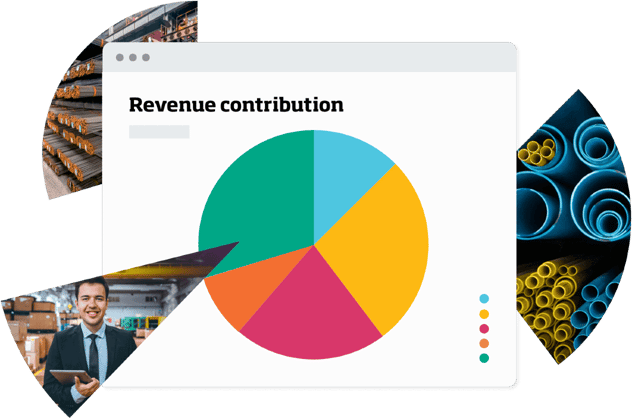Forecast customer demand with accuracy

Sales, purchasing and stock data in one view
Immediately see trends and sales patterns when all your data is linked together.
Integrate data automation flow from multiple sources such as ERP systems, CRM platforms, POS systems, inventory management systems and spreadsheets for easy access in your cloud. Work from a comprehensive view of sales data, customer information, inventory levels and relevant supply chain metrics.
- See stock on hand, open purchase orders and sales forecasts
- Predict what stock levels are needed for customer satisfaction
- Integrate sales forecasts against historical data trends
- Connect with RF (radio frequency) system for warehouse actions
- Analyze and incorporate seasonal data
- Narrow forecast down by variants like price, size and colour
Master inventory calculations and anticipate future demand
Read blogDemand plan at any level
Analyze demand patterns and tailor your forecasting strategies for every market segment.
- Calculate customer demand by product class, profitability or sales channel
- Slice and dice your market data end-to-end
- Review multiple measures side by side against sales, purchasing and stock for effective decision-making
- Plan using sales value, sales cost, number of invoices, stock on hand, stock availability measures

When past performance and real time sales combine for accurate demand forecasts


The great thing about Phocas is that it not only keeps us up to date on what's currently happening, but helps us understand where we were a year ago as well as plan and forecast what's coming up in the next few months in terms of products and promotions.
— Chris Rath, Operations Manager at Tradeware.
Visualize the future
Analyze historical sales data, identify demand trends, and visualize patterns or anomalies that inform demand management.
- Customizable dashboards, charts, graphs, and heatmaps
- Get a big picture view of all forecasts from product sku 1 to 100 in every region and branch
- Manage forecast KPIs for all products
- Test demand planning process on new product lines

Don't miss optimization opportunities
Get instant notifications from the algorithm built into your databases when your set thresholds are up or down
- Stay on top of seasonality
- No more stockouts when orders build
- No more excess inventory tying up cashflow
- Run reports by product category, branch or supplier for new insights

Why Phocas demand planning and analysis?
Plan
Measure
Pivot
Hundreds of business leaders share the love
Phocas
QlikView
Domo
Power BI
Looker
Source: The BI & Analytics Survey 23, BARC
Source: The BI & Analytics Survey 23, BARC
Frequently asked questions
Demand planning software forecasts demand for all of your products based on consolidated data, seasonality, promotions and customer behaviour. The primary goal of demand planning software is to help businesses optimize inventory levels, streamline production schedules, and ensure sufficient stock availability to meet customer needs while minimizing excess inventory and tying up cashflow.
When selecting demand planning software it is essential to consider how the platform can access and store data. The more detail you can forecast to like by sales value, sales cost, stock availability and number of invoices the better the accuracy. Ensure the software can accept supply chain management information from the warehouse and beyond as well as pertinent information from your ERP as well as be able to customize the databases to support your business nuances.
Effective demand planning often requires input from multiple stakeholders across different departments. Look for software that facilitates collaboration by enabling teams to share data, insights, and feedback in real-time.
The software should provide powerful analytics and reporting capabilities to track forecast accuracy, monitor key performance indicators (KPIs),and identify trends and patterns in demand data. Look for customizable dashboards and real-time insights to support data-driven decision-making.
Demand planning and demand forecasting are closely related concepts in business operations and supply chain management, but they serve different purposes and involve distinct processes.
Demand forecasting involves predicting future customer demand for a product or service based on historical data, market trends, seasonality, and current conditions. Demand planning involves translating demand forecasts into plans and strategies to ensure that the right products are available in the right quantities at the right time.
Yes, many software solutions are designed to handle both inventory management and demand forecasting within a single integrated platform. These types of software offer features to help businesses optimize their inventory levels while accurately predicting future demand. Look out for platforms that offer Artificial Intelligence capability, multiple system and data integration plus reporting and analytics.
The Phocas platform integrates data from various sources, including historical sales data, inventory levels, customer orders and market trends to facilitate both inventory management and demand forecasting processes. Phocas includes advanced forecasting algorithms and models to generate accurate demand forecasts. Planners can adjust parameters and perform scenario analysis to improve forecast accuracy.
Understand the past, operate better today, and plan well for the future
